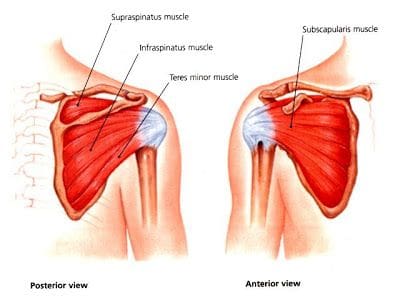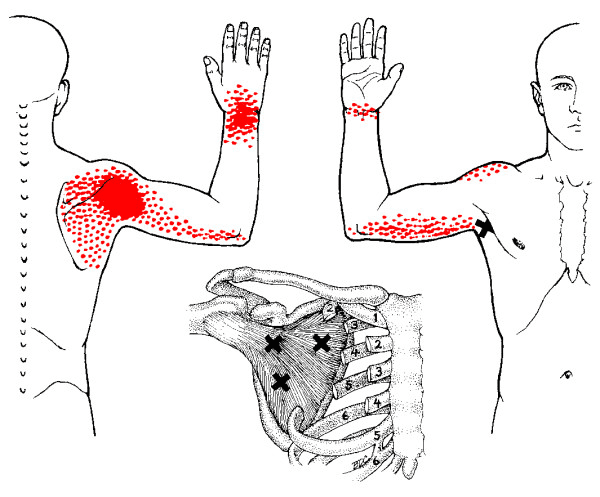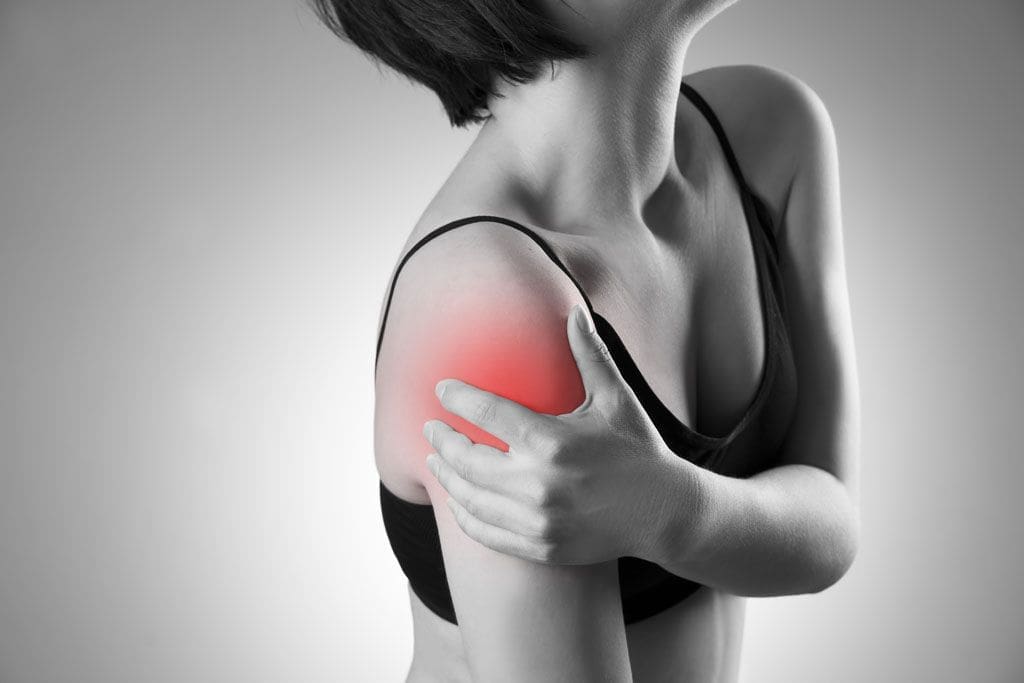Table of Contents
Introduction
The body has various muscle groups that work together to make each section of the body move. The arms, shoulders, and neck muscles in the upper half of the body allow mobility and range of motion without discomfort. The muscles in the midsection protect the vital organs and spine while assisting in rotation. And the low half of the body, which includes the hips, legs, and feet, helps the body to move from place to place. However, just like all muscles, injuries can occur to the body and cause issues if they are not taken care of immediately. This allows the muscle fibers to develop myofascial pain syndrome or trigger points, causing overlapping risk profiles at risk of developing pain in the affected area. For the upper body, when trigger points affect the shoulders, it can lead to referred pain that can affect the arms. Today’s article examines the shoulder muscle known as the subscapularis muscle, how trigger points are associated with the subscapularis, and ways to manage trigger point pain on the subscapularis muscle in the shoulder. We refer patients to certified providers specializing in musculoskeletal pain treatments to aid individuals suffering from trigger points associated with the subscapularis muscles. We also guide our patients by referring them to our associated medical providers based on their examination when appropriate. We ensure that education is a great solution to asking our providers insightful questions. Dr. Jimenez DC observes this information as an educational service only. Disclaimer
What Is The Subscapularis Muscle?

Have you been feeling a constant ache in your shoulder muscles? Does your wrist seem to hurt, making it hard to grasp objects? Or Do you feel pain in your triceps or shoulder muscles? Individuals experiencing these symptoms might risk developing trigger points associated with shoulder pain along the subscapularis muscle. The subscapularis is the largest, strongest muscle of the rotator cuff that lies in the anterior or front of the scapular surface and provides shoulder movement while helping maintain glenohumeral joint stability. The best way to describe how it looks is that it seems like a chicken wing. The subscapularis is also part of the rotator cuff muscles, which includes the teres minor, supraspinatus, and infraspinatus muscles, and is active when a person swings their arms forward. When issues affect the shoulders, it can lead to referred pain affecting the upper extremities, including the hands, arms, and even the shoulders.
Trigger Point Associated With The Subscapularis Muscle
When injuries affect the shoulders, the muscle fibers that help stabilize the shoulders begin to develop small nodules, known as trigger points, that can invoke pain from the shoulders to the wrist, causing referred pain. The subscapularis and its tendons become affected when it becomes injured and can be prone to tearing. Studies reveal that when the subscapularis tendon has partial tears in the rotator cuff, it would be considered forgotten with “hidden lesions” that can overlap pain symptoms in the shoulders.

Active trigger points in the subscapularis muscle can mimic other pre-existing conditions affecting the shoulders. Once the subscapularis tendon has partial tears in the muscle, it can develop trigger points along the subscapularis muscle and become active, causing various shoulder conditions. One of those conditions is frozen shoulders, and studies reveal a strong association between the subscapularis trigger points and the frozen shoulder. The “frozen shoulder” or adhesive capsulitis of the body is a common shoulder condition often characterized by pain, restricted range of motion, and a high morbidity rate. When a person is dealing with a frozen shoulder, it is often mistaken for shoulder stiffness as it doesn’t respond to non-invasive treatments. All is not lost, as there are various ways of manage active trigger points associated with the subscapularis muscle.
Massage Technique For The Subscapularis Muscle-Video

Have you been experiencing a limited range in your shoulders? Do your hands and wrist ache all the time when grasping items? Or does the pain seem to affect your biceps and shoulders constantly? These symptoms are signs associated with triggering points affecting the shoulders and the subscapularis muscle. The subscapularis muscle resembles a chicken wing, is in front of the scapula, and is part of the rotator cuff muscle group. When the shoulder gets injured or suffers from a traumatic event, it can later develop tiny knots known as trigger points to cause pain and stiffness to the muscle and affect a person’s mobility. To that point, it can mimic other chronic conditions that had pre-existed before the shoulders were affected. Thankfully, there are ways to manage trigger points associated with the subscapularis muscle along the shoulders. The video above explains how pain can be reduced along the subscapularis muscle through a massage technique.
Ways To Manage Trigger Point Pain On The Subscapularis Muscle

Since trigger points mimic other conditions, they can be difficult to diagnose and cause referred pain down the arms. Fortunately, there are ways to manage pain associated with trigger points on the subscapularis muscle. Studies reveal that clinical approaches like mobilizations, stretching, or massaging may help decrease shoulder stiffness while improving pain symptoms in patients with stiff shoulders and posterior shoulder tightness. Incorporating these techniques allows the tight, inflexible muscles to become loose and reduce the effects of referred pain caused by trigger points. To that point, it provides mobility and range of motion back to the shoulders and the subscapularis muscle.
Conclusion
The subscapularis muscle is located in the front of the scapula and resembles a chicken wing. This subscapularis is the largest and strongest of the rotator cuff muscles, providing shoulder movement and joint stability. When issues affect the shoulders, it can lead to referred pain that affects the hands, arms, and shoulders. These are trigger points and can cause overlapping symptoms of stiffness and pain in the shoulders and subscapularis muscles. Fortunately, there are therapeutic ways to manage the pain associated with trigger points along the shoulders and subscapularis muscles. When patients incorporate stretching, massaging, or mobilization techniques, a pain specialist can help reduce the trigger point pain and bring back mobility to their shoulders.
References
Aguirre, Kenneth, et al. “Anatomy, Shoulder and Upper Limb, Subscapularis Muscle.” In: StatPearls [Internet]. Treasure Island (FL), StatPearls Publishing, 7 Aug. 2021, https://www.ncbi.nlm.nih.gov/books/NBK513344/.
Arjun, M V, and S Rajaseker. “Association between Subscapularis Trigger Point and Frozen Shoulder: A Cross Sectional Study.” Journal of Bodywork and Movement Therapies, U.S. National Library of Medicine, Oct. 2021, https://pubmed.ncbi.nlm.nih.gov/34776170/.
Lee, Julia, et al. “Subscapularis Tears: Hidden and Forgotten No More.” JSES Open Access, Elsevier, 1 Mar. 2018, https://www.ncbi.nlm.nih.gov/pmc/articles/PMC6334875/.
Disclaimer
Professional Scope of Practice *
The information herein on "Trigger Points Affecting The Subscapularis Muscle" is not intended to replace a one-on-one relationship with a qualified health care professional or licensed physician and is not medical advice. We encourage you to make healthcare decisions based on your research and partnership with a qualified healthcare professional.
Blog Information & Scope Discussions
Welcome to El Paso's Premier Wellness and Injury Care Clinic & Wellness Blog, where Dr. Alex Jimenez, DC, FNP-C, a Multi-State board-certified Family Practice Nurse Practitioner (FNP-BC) and Chiropractor (DC), presents insights on how our multidisciplinary team is dedicated to holistic healing and personalized care. Our practice aligns with evidence-based treatment protocols inspired by integrative medicine principles, similar to those found on this site and our family practice-based chiromed.com site, focusing on restoring health naturally for patients of all ages.
Our areas of multidisciplinary practice include Wellness & Nutrition, Chronic Pain, Personal Injury, Auto Accident Care, Work Injuries, Back Injury, Low Back Pain, Neck Pain, Migraine Headaches, Sports Injuries, Severe Sciatica, Scoliosis, Complex Herniated Discs, Fibromyalgia, Chronic Pain, Complex Injuries, Stress Management, Functional Medicine Treatments, and in-scope care protocols.
Our information scope is multidisciplinary, focusing on musculoskeletal and physical medicine, wellness, contributing etiological viscerosomatic disturbances within clinical presentations, associated somato-visceral reflex clinical dynamics, subluxation complexes, sensitive health issues, and functional medicine articles, topics, and discussions.
We provide and present clinical collaboration with specialists from various disciplines. Each specialist is governed by their professional scope of practice and their jurisdiction of licensure. We use functional health & wellness protocols to treat and support care for musculoskeletal injuries or disorders.
Our videos, posts, topics, and insights address clinical matters and issues that are directly or indirectly related to our clinical scope of practice.
Our office has made a reasonable effort to provide supportive citations and has identified relevant research studies that support our posts. We provide copies of supporting research studies upon request to regulatory boards and the public.
We understand that we cover matters that require an additional explanation of how they may assist in a particular care plan or treatment protocol; therefore, to discuss the subject matter above further, please feel free to ask Dr. Alex Jimenez, DC, APRN, FNP-BC, or contact us at 915-850-0900.
We are here to help you and your family.
Blessings
Dr. Alex Jimenez DC, MSACP, APRN, FNP-BC*, CCST, IFMCP, CFMP, ATN
email: coach@elpasofunctionalmedicine.com
Multidisciplinary Licensing & Board Certifications:
Licensed as a Doctor of Chiropractic (DC) in Texas & New Mexico*
Texas DC License #: TX5807, Verified: TX5807
New Mexico DC License #: NM-DC2182, Verified: NM-DC2182
Licensed as a Multi-State Advanced Practice Registered Nurse (APRN*) in Texas & Multistate
Multistate Compact RN License by Endorsement (42 States)
Texas APRN License #: 1191402, Verified: 1191402 *
Florida APRN License #: 11043890, Verified: APRN11043890 *
* Prescriptive Authority Authorized
ANCC FNP-BC: Board Certified Nurse Practitioner*
Compact Status: Multi-State License: Authorized to Practice in 40 States*
Graduate with Honors: ICHS: MSN-FNP (Family Nurse Practitioner Program)
Degree Granted. Master's in Family Practice MSN Diploma (Cum Laude)
Dr. Alex Jimenez, DC, APRN, FNP-BC*, CFMP, IFMCP, ATN, CCST
My Digital Business Card
RN: Registered Nurse
APRNP: Advanced Practice Registered Nurse
FNP: Family Practice Specialization
DC: Doctor of Chiropractic
CFMP: Certified Functional Medicine Provider
IFMCP: Institute of Functional Medicine
CCST: Certified Chiropractic Spinal Trauma
ATN: Advanced Translational Neutrogenomics














